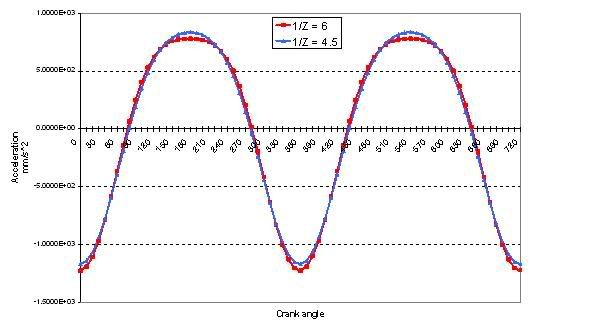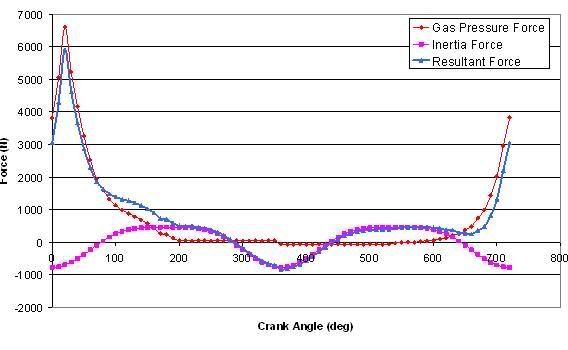Yes, strad makes an excellent point about rod ratio and rod length. The whole issue of what is the optimum rod ratio is very complex, and ultimately depends upon how the engine will be used.
In kinematic terms, a longer rod ratio will give a more uniform piston velocity and lower peak piston accelerations from TDC to BDC for a given stroke length. A shorter rod ratio will do the opposite. With regards to airflow, since intake airflow velocity tends to follow piston velocity very closely, a long rod ratio (with its lower airflow velocities) will have better VE at low speeds, and thus better torque/BMEP, than the same engine with a short rod ratio.
However, at higher speeds the short rod ratio may be beneficial. This is due to the fact that the short rod ratio kinematics produce a "dwell" at piston BDC. This BDC dwell effect maximizes the intake charge inertias and helps improve VE.
With an 18,000 rpm F1 engine, main and rod bearing inertia loads are of primary concern. So using the lightest (ie. shortest) rod practical is beneficial. And the practical limit with regards to rod length is defined by piston skirt-to-crank throw at piston BDC, or by rod beam swing-to-liner bottom clearance at mid stroke.
Regards,
riff_raff
- Login or Register
No account yet? Sign up


